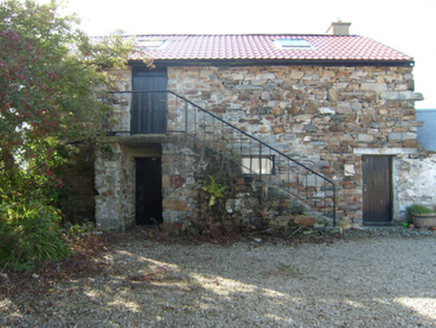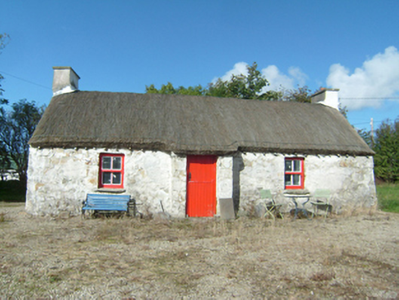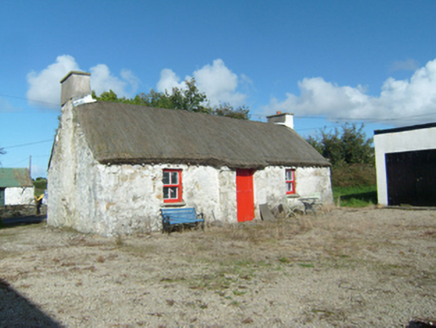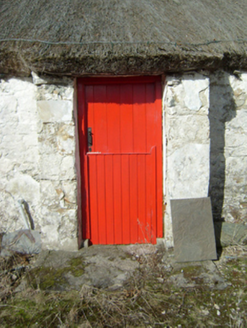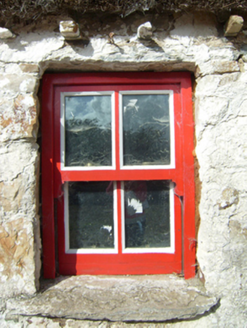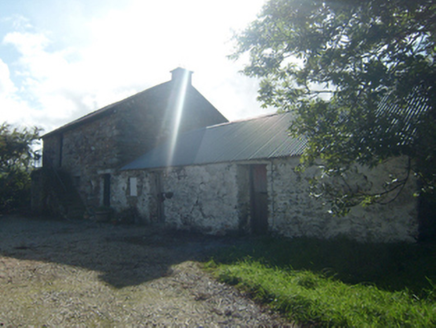Survey Data
Reg No
40808015
Rating
Regional
Categories of Special Interest
Architectural, Technical
Original Use
House
Date
1860 - 1900
Coordinates
213795, 437077
Date Recorded
29/09/2010
Date Updated
--/--/--
Description
Detached three-bay single-storey vernacular house, built c. 1880, having central shallow projecting windbreak porch to the front elevation (south). Now no longer occupied. Pitched thatched roof with rendered chimneystacks to the gable ends (east and west), and with projecting stone pegs below eaves to front and rear elevations and metal pegs to the side elevations. Partially rendered random rubble stone walls with remains of lime wash over. Square-headed window openings with stone sills and replacement timber sliding sash windows. Blank elevation to rear (north). Square-headed doorway to the windbreak porch having plinth blocks and replacement battened timber half-doors. Stone step to front door. Located to the north-east of Carrickart a short distance to the east of Gordon’s Strand. Front elevation faces away from road. Complex of single- and two-storey outbuildings to the west. Single-storey outbuilding to the north of complex of outbuildings having pitched corrugated-metal roof, rubble stone walls and square-headed openings with remains of battened timber fittings; partially restored two-storey outbuilding to the south of complex of outbuildings having replacement tiled roof, partially-rebuilt rubble stone walls, external flight of stone steps giving access to doorway at first floor level to the east elevation, and square-headed openings with replacement battened doors.
Appraisal
Although now out of use, this charming and relatively well-maintained example of a thatched vernacular house retains its early form and character, and is an appealing feature in the isolated rural landscape to the north-east of Carrickart. Modest in scale, it exhibits the simple and functional form of vernacular building in Ireland. Of particular interest in the survival of the thatch roof, although recently renewed, which is now sadly becoming increasingly rare in Donegal. The rounded roof is a typical feature of thatched houses located close to the sea in exposed areas in the north-west of Ireland, while the stone pegs to the eaves and the metal pegs to the gable ends were used to tie ropes (and sometimes nets) over the roof to secure it against the prevailing winds, as is the case here at Carrickart. The blank rear elevation is a typical feature of many small-scale vernacular dwellings in rural Ireland. The form of this building and location of the chimneystacks suggests that this building is of the ‘direct entry’ type that is characteristic of the vernacular tradition in north-west Ireland. Although the fittings to the openings have been replaced, the modern fittings fail to detract substantially from its integrity. Although the two-storey outbuilding has been restored for use as a studio, the complex of rubble stone outbuildings at to the setting and historic context. The external flight of stone steps to the two-storey outbuilding to the south (giving access to a door at first floor level) is a feature of many vernacular outbuildings in rural Donegal. This house represents a fine surviving example of a once ubiquitous building type in the rural Irish countryside, and is one of an attractive feature in the rural landscape adjacent to Gordon’s Bay to the north-east of Carrickart.
